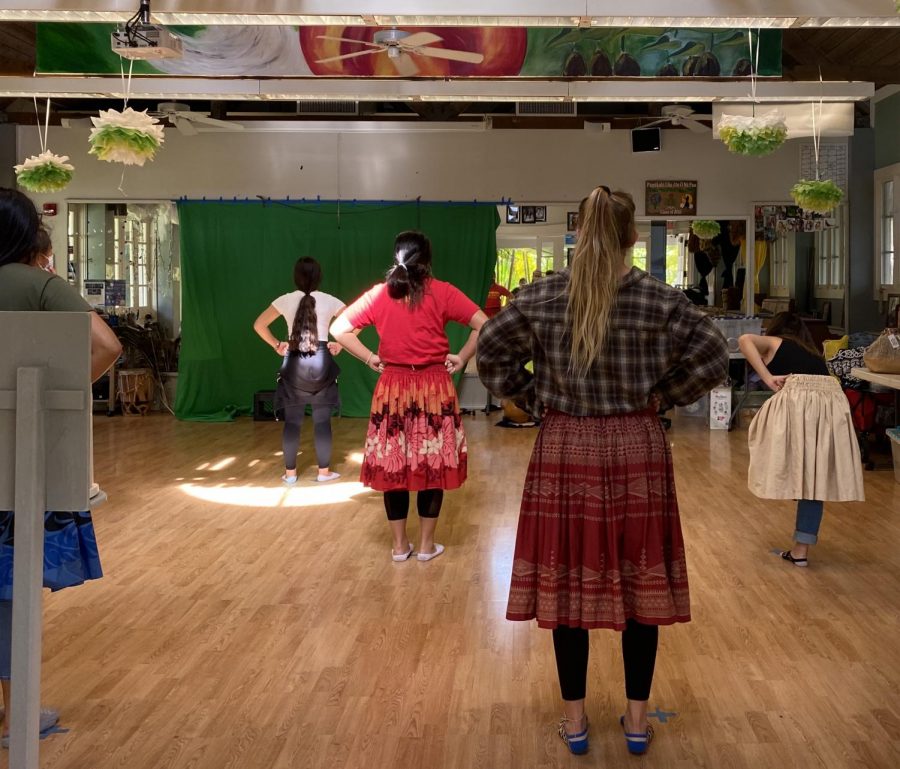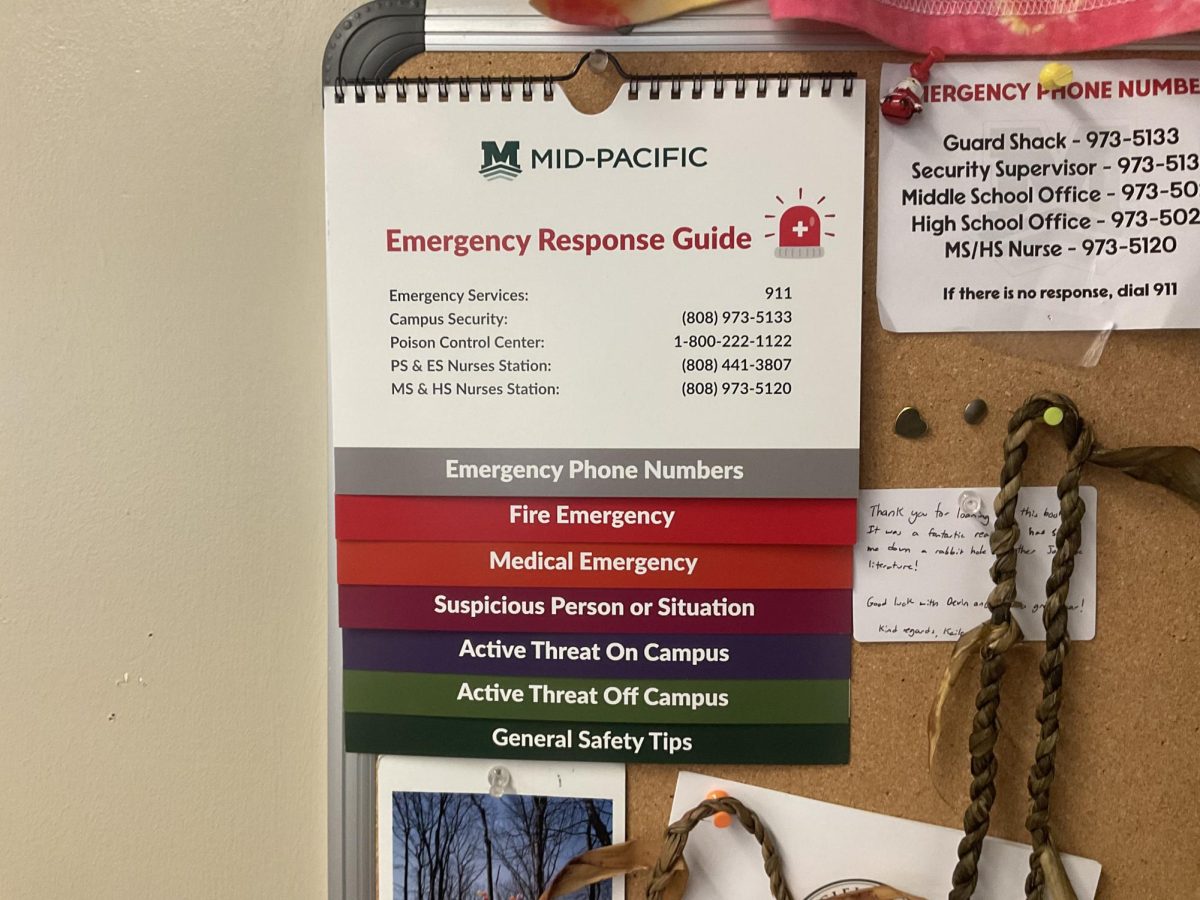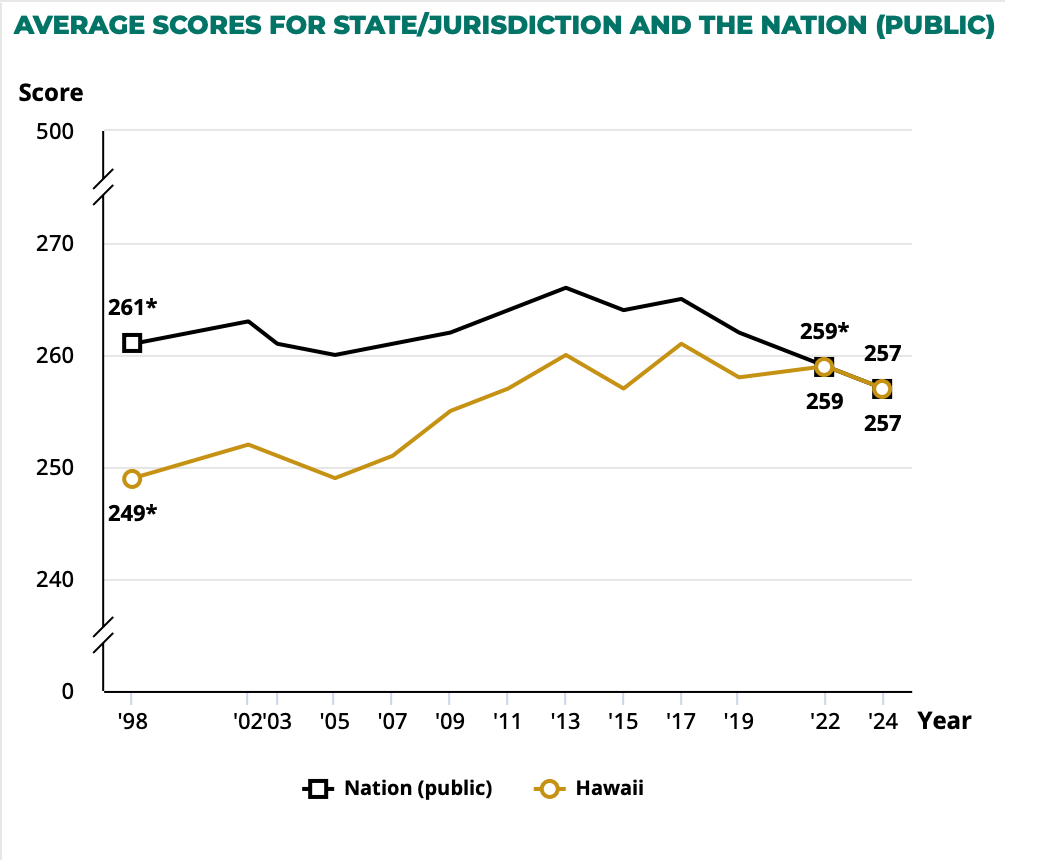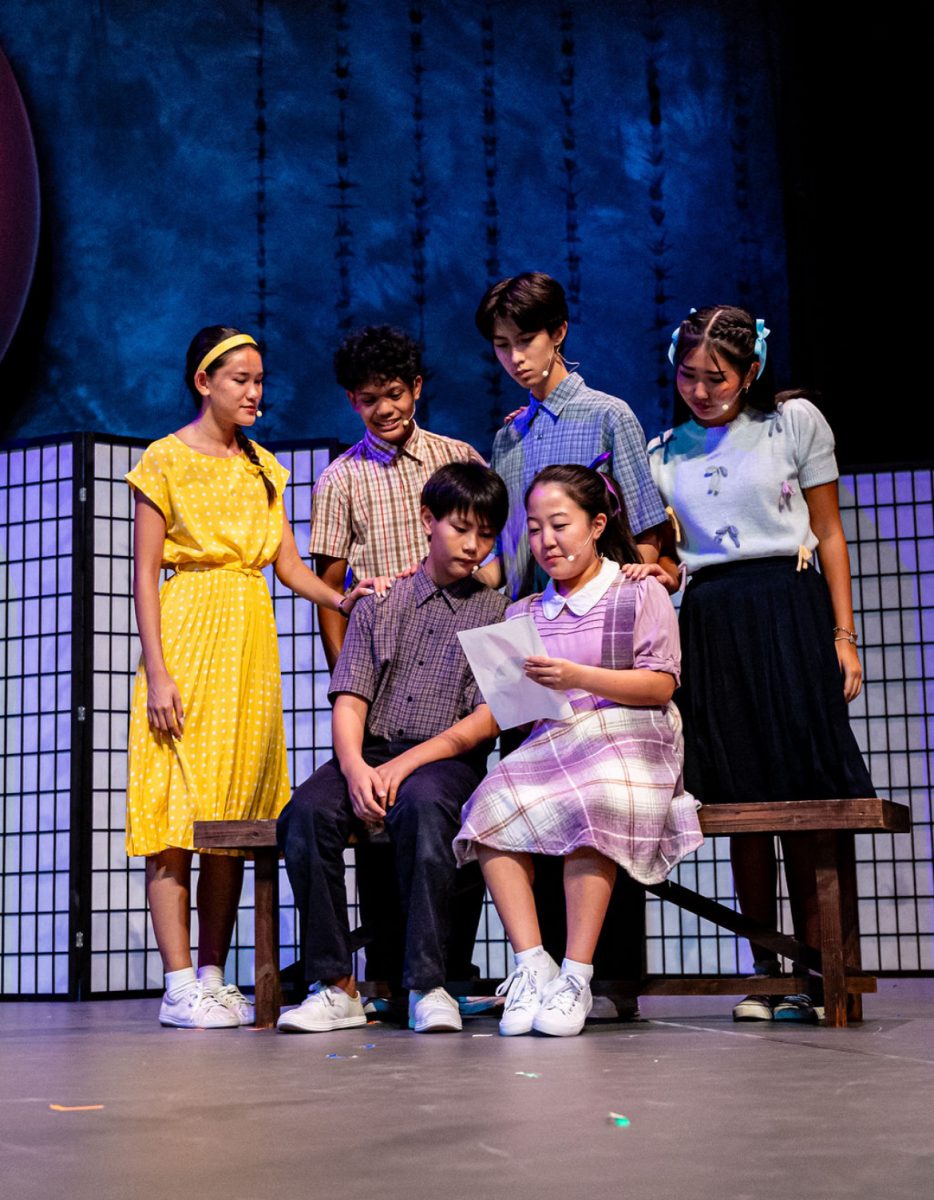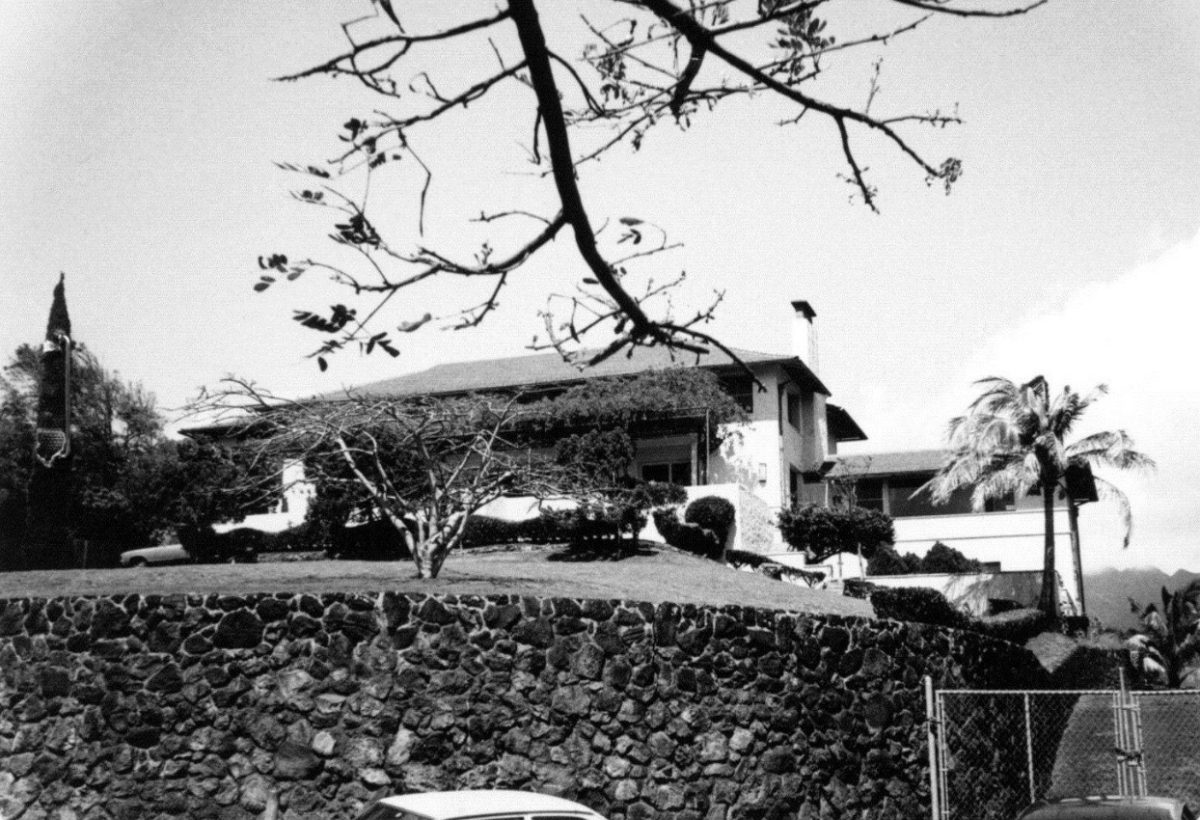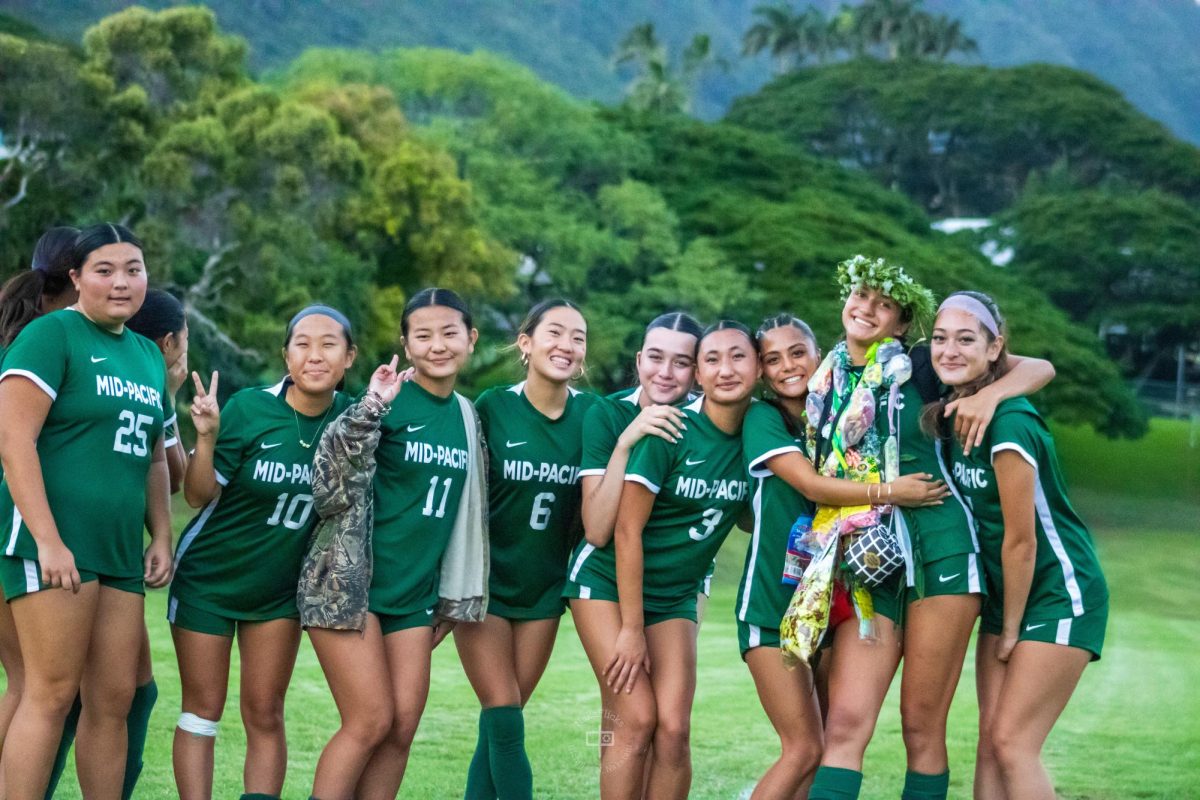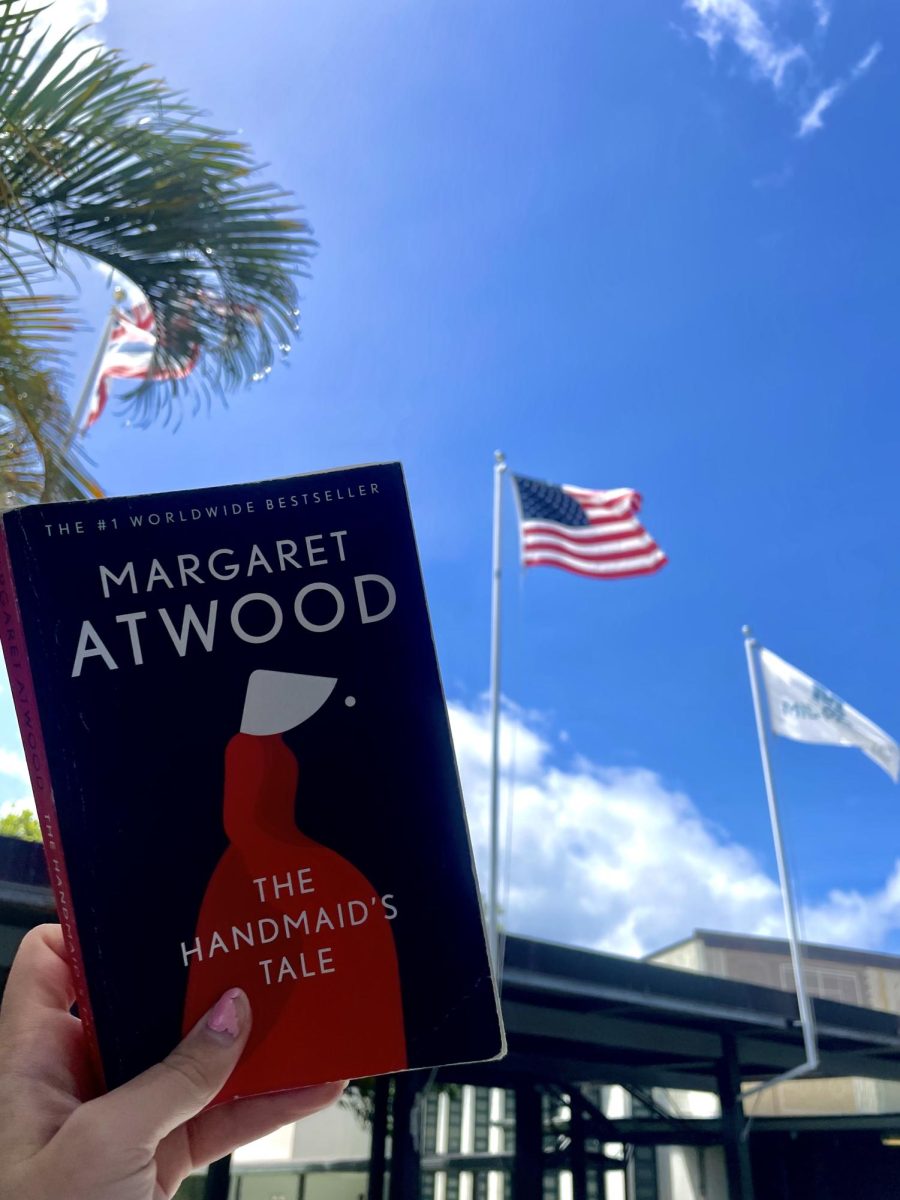MPSA dance program may look a bit different than before
Hula students standing in ready position six feet apart from each other. Mid-Pacific’s hula program is not deeply affected by social distancing guidelines.
January 5, 2021
With neon gridded floors, Zoom lag, and masked dancers, this year’s Mid-Pacific School of the Arts (MPSA) dance program will look like no other.
Yes, students are still dancing. However, dancers opting for in-person learning must adhere to the same mask-wearing and physical distancing guidelines as all other Mid-Pacific students.
To create a safe distance between dancers, the MPSA contemporary and ballet classes use tape to divide their classrooms into nine by nine foot boxes, creating spaces that separate each student into their own section.
“It looks like laser tag,” said contemporary dance teacher Ka’ohi Yojo Daniels, who is teaching virtually this semester.
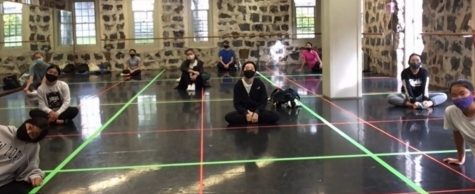
These boxes restrict group work and any exercises that require face to face contact. Teachers have choreographed ways to dance around this hurdle.
Due to these limitations, students miss collaborating with each other, said Daniels. As a result, she recently experimented with a partner activity where dancers are able to face the same direction and mirror their partner’s movements. The only requirement, students must wear a face shield in addition to their masks.
“A majority of them enjoyed it, so I think that’s how we’re going to get around trying to keep collaboration in the studio, we just have to be shielded up,” said Daniels.
However, personal protective equipment (PPE) can be a burden to fashion.
A survey taken by 35 dancers conducted by Na Pueo staffers on Instagram polls found that 74 percent of participants believe wearing a mask makes dancing more difficult.
In hula, dancers stand on a taped “X” instead of inside a box because ‘olapa (dancers) move as a group. With the synchronicity of hula, facing the same direction is not as big of an issue.
“They’re always going to be at the same distance…whether they leave that ‘X,’ they just come back to it again,” said hula kumu (teacher) Michael Lanakila Casupang.
Although the dancing aspect of hula has not shifted as drastically as ballet or contemporary, an integral facet of hula has still been sacrificed.
“In order to get into class, everyone would gather in a big cluster and chant together to ask permission to come in, but we can’t do that anymore,” said Casupang.
This includes casual conversation between dancers, which can be difficult to subdue when classmates are so close with each other, said Casupang.
Despite the many challenges COVID-19 has created in the studio, the MPSA dance community is continuing its annual dance concerts.
Both the MPSA dance certificate and hula department will be hosting their dance concerts virtually this year.
“Something that came out of COVID-19, and not just at Mid-Pacific, but in the dance world in general, is a new way of choreographing and thinking,” said Daniels.
Because dancers have been filming so much, they have gained new skills in filming techniques and solo work, said sophomore contemporary IV dancer Cara Borden.
“Another advantage of this is that people who live internationally or on different islands…can be a part of this production, where before they couldn’t,” said Casupang.
Although the virtual world holds many benefits, a serious struggle that many teachers and students face is communication.
“The trickiest part is the whole Zoom lag time with the music,” said Daniels.
Zoom lag can distort, delay, and muffle sounds, which can make following along to music a struggle for dancers.
This heightened stress can be further intensified by at-home learning, which can make it even harder to keep up with combinations.
“If you forget something, you can look at someone and remember the choreography, but without anyone there, I would just forget what I’m doing,” said Borden.
Being isolated at home can also drain your drive to dance at all, with motivation becoming an important factor when it comes to online learning.
“When it’s screen to screen and not face to face, there isn’t a lot of human interaction…when you lack that, it’s almost like the spark in you kind of dies out,” said junior IB dancer Kyson Kai.
When in-person, some notice that dancing flows much smoother than online.
“We need each other when we dance, as far as the energy and the timing…as soon as they started dancing together here, their timing was on, they started to connect,” said Casupang.
However, being virtual does have many benefits that can create more of a freeing experience.
“We don’t have to wear masks, we don’t have to wear shields, we can go on the floor if we want. So, in that sense, I like that aspect,” said Daniels.
Now that dancers can opt for in-person learning, the dress code has been relaxed in contemporary and ballet classes. Dancers are no longer required to wear a leotard and tights, instead, they can now wear leggings and a t-shirt.
“They don’t have access to the dressing rooms anymore…we’re not sure if that’s safe for the students to have that much airflow around them,” said Daniels.
The dress code has changed so that dancers have an easier time changing their clothes, said Daniels.
“I structured my class a little different, so that the students can go and change more towards the middle of class,” said Daniels.
In both hula and dance certificate classes, teachers take great consideration in ventilation.
“I’ve got all the windows, all the doors open just for ventilation, where before we would have it closed and have the air on,” said Casupang.
These classroom changes can make dancing uncomfortable.
“The students are so hot because there’s no AC, but again, all of these decisions were made with safety in mind,” said Daniels.
Although the pandemic has created many setbacks in the studio, students have recognized and appreciate that their teachers are trying their best.
“I like that they are making an effort to try to make sure that we can still dance,” said sophomore dance certificate V student Kimi Yokoyama.
A survey taken by 20 dancers conducted by Na Pueo staffers on Instagram polls found that 60 percent of participants want more dance time in class.
The desire for more dance time is a prominent matter, but as Daniels has said, teachers are always thinking about the safety aspect of the class.
“I try to keep their cardiovascular exercises minimized so that they’re not sweating too much because [of] ventilation,” said Daniels.
Changes like these exemplify the innovation and resilience the MPSA dance community has made in the face of COVID-19.
“We just have to find the positive in everything that we do…We’ve been getting lemons all 2020, what are we going to do with it?” said Casupang.

